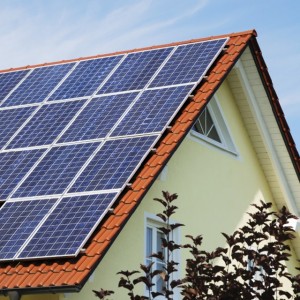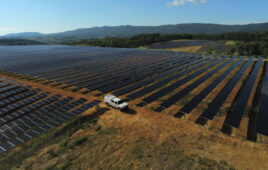At Solar Power International 2015, Vice President Joe Biden kicked off his speech praising the solar industry’s growth by pointing out there are now more than 175,000 Americans employed in the industry, and the number is continuing to grow.
 Last year, a study by the Center for American Progress found that in five major solar states (Arizona, California, Massachusetts, New Jersey and New York) well over half of residential rooftop installations were in neighborhoods with average household incomes between $40,000 and $90,000.
Last year, a study by the Center for American Progress found that in five major solar states (Arizona, California, Massachusetts, New Jersey and New York) well over half of residential rooftop installations were in neighborhoods with average household incomes between $40,000 and $90,000.
The solar industry is empowering the American middle class in two important ways: It is enabling more homeowners than ever before to save money on their electricity bills by putting solar on their roofs, and it is fueling creation of new, high-quality, living-wage jobs for installers.
An integral driver of this growth for middle class homeowners is access to financing. Falling equipment prices have gone a long way toward making solar more affordable, but for thousands of Americans who can’t accumulate enough cash to make a down payment on a system (let alone buy it outright), falling equipment prices will never be quite enough to make the solar equation work. What these homeowners need is an alternative that enables them to choose solar and save money from Day 1 on their electricity bill. The residential finance options, and loans in particular, that have cropped up over the last two years are the missing pieces of the puzzle.
Even just a few years ago, only large, vertically integrated solar companies were equipped to offer financing to homeowners, and these options did not maximize homeowner savings as they were typically PPA or lease-style financing with built-in escalators. Homeowners who didn’t want a lease and couldn’t afford to pay cash were either on their own to work with a local bank or credit union or they were out of luck.
Low-interest solar loans have made the difference. Homeowners qualify based on credit score and are locked into a monthly payment that doesn’t escalate. They own their power source, they’re eligible for the investment tax credit (ITC) and any other regional incentives and, by realizing immediate savings on their electricity bill, they have more money in their bank account at the end of the month, increasing their spending power.
The effects of solar financing aren’t felt just by homeowners now able to access solar. President Obama’s FY16 budget outlines how building a clean energy economy strengthens America’s middle class, and when a small regional installer is outfitted with a strong residential finance option, that is exactly what happens. That installer can now compete with the larger, vertically integrated solar companies in his area that his potential customers may have already heard of. When these small and medium-sized regional installers broaden their customer base, they also have to hire-up to keep pace with demand. Thus a secondary effect of good residential solar financing is more high-quality solar jobs.
Earlier this year, President Obama observed at the National Clean Energy Summit that the American solar industry now employs twice as many workers as coal miners. According to the Solar Foundation’s National Solar Jobs Census 2014, the industry is adding high-quality, living-wage jobs at a rate of 20% per year. And these aren’t minimum wage jobs either; the typical solar installer makes $20 to $24 an hour, even without a college degree.
Solar is empowering middle class Americans, from the homeowners putting systems on their roofs to the installers hiring more staff to keep pace with demand. But it all comes down to creating access. In order to expand their customer base and their hiring efforts, regional installers need access to competitive finance options in the first place. In order to save money on their electricity bills, homeowners need access to low-interest loans. As an industry, it is our responsibility to make sure options proliferate and barriers to access continue to fall.
This article is by Veronica Clarkson, Business Strategy Manager at Solar Engine (a sister company to Soligent Distribution), providing financing and design services to solar installers throughout the United States.




Tell Us What You Think!